Rock garden ideas - Experts reveal the 10 best ways to add one to your garden
Modern and inspiring rock garden ideas that will add a new dimension to your garden

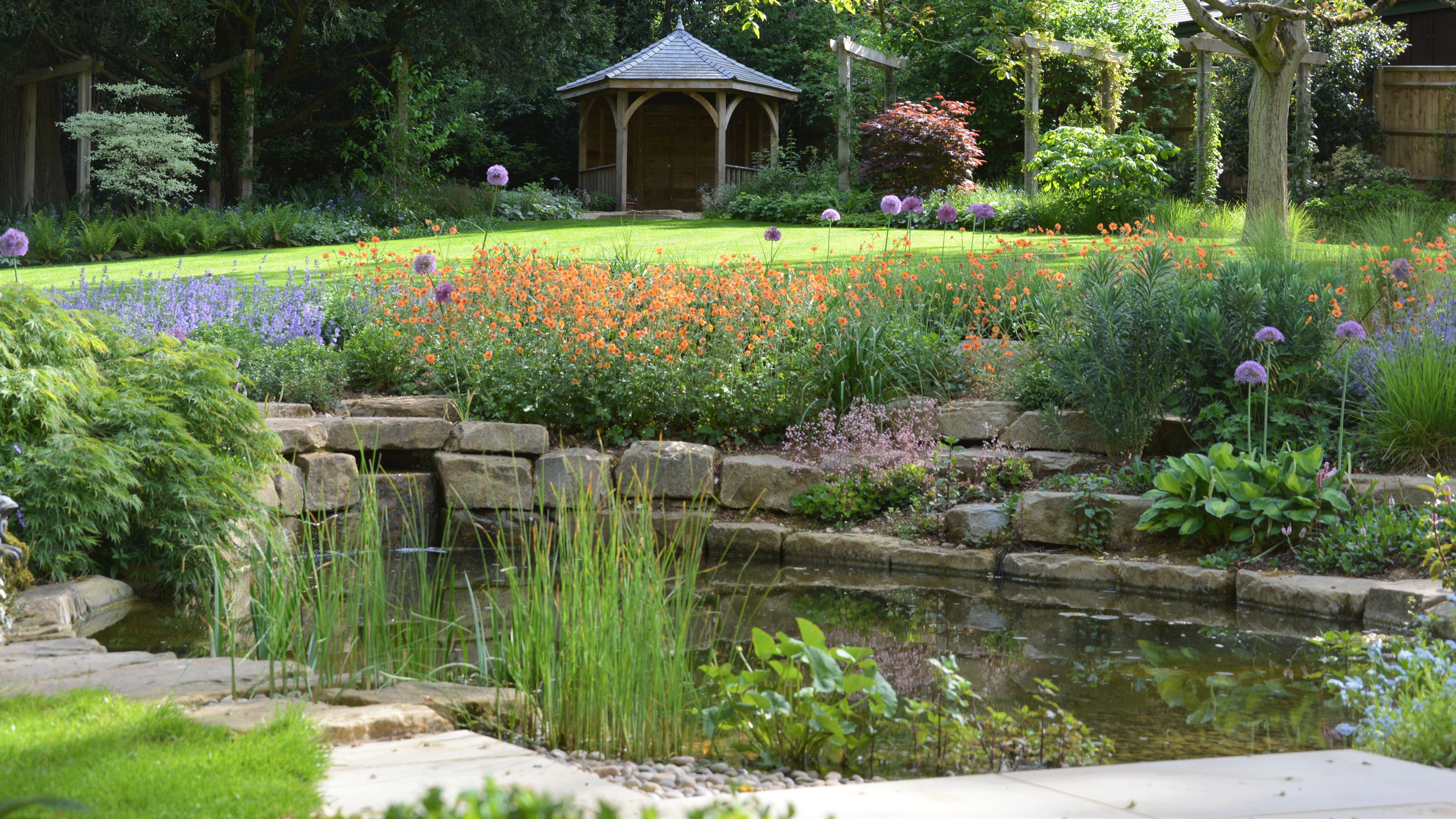
Rock garden ideas come in and out of fashion as a garden trend, but right now they’re having a moment. As well as being easy to look after and requiring minimal amounts of water – even in heatwaves – a rock garden is always a talking point in any outside space.
And you don’t need a large garden to build your own. Ever-adaptable, rock gardens can be created in any corner of a backyard, including shade, or even built as part of your balcony garden ideas, or in a large container.
Although most rock gardens feature alpine plants which thrive in mountainous areas they can also be inspired by classical designs. For example, Japanese Zen rock gardens are often based on large smooth stones, covered with attractive moss, designed with shrubs and compact trees such as acers, and some kind of water feature as a centrepiece.
Traditional Victorian and Edwardian rock gardens, which started out as ‘quarry gardens’ in the grounds of large estates – the stone having been used to build the grand house – were often a way to showcase specimen plants such as succulents and rare primula auriculas.
'Rockeries are probably having a resurgence as once established; they are easy to maintain, fuss-free and can cope with extremes in temperatures,' says garden designer and BBC Garden Rescue presenter Lee ‘Garden Ninja’ Burkhill.
'Ask any rock garden enthusiast, and they will brim with excitement about creating tiny versions of high-altitude wild planting.'
Rock garden ideas
Designing and building your own rock garden is great fun, because it’s never as daunting as a full-scale garden design. We asked experts to share their favourite ideas and top tips to bring this easy garden idea into your outdoor space.
Sign up to our newsletter for style inspiration, real homes, project and garden advice and shopping know-how
1. Choose a sunny open space
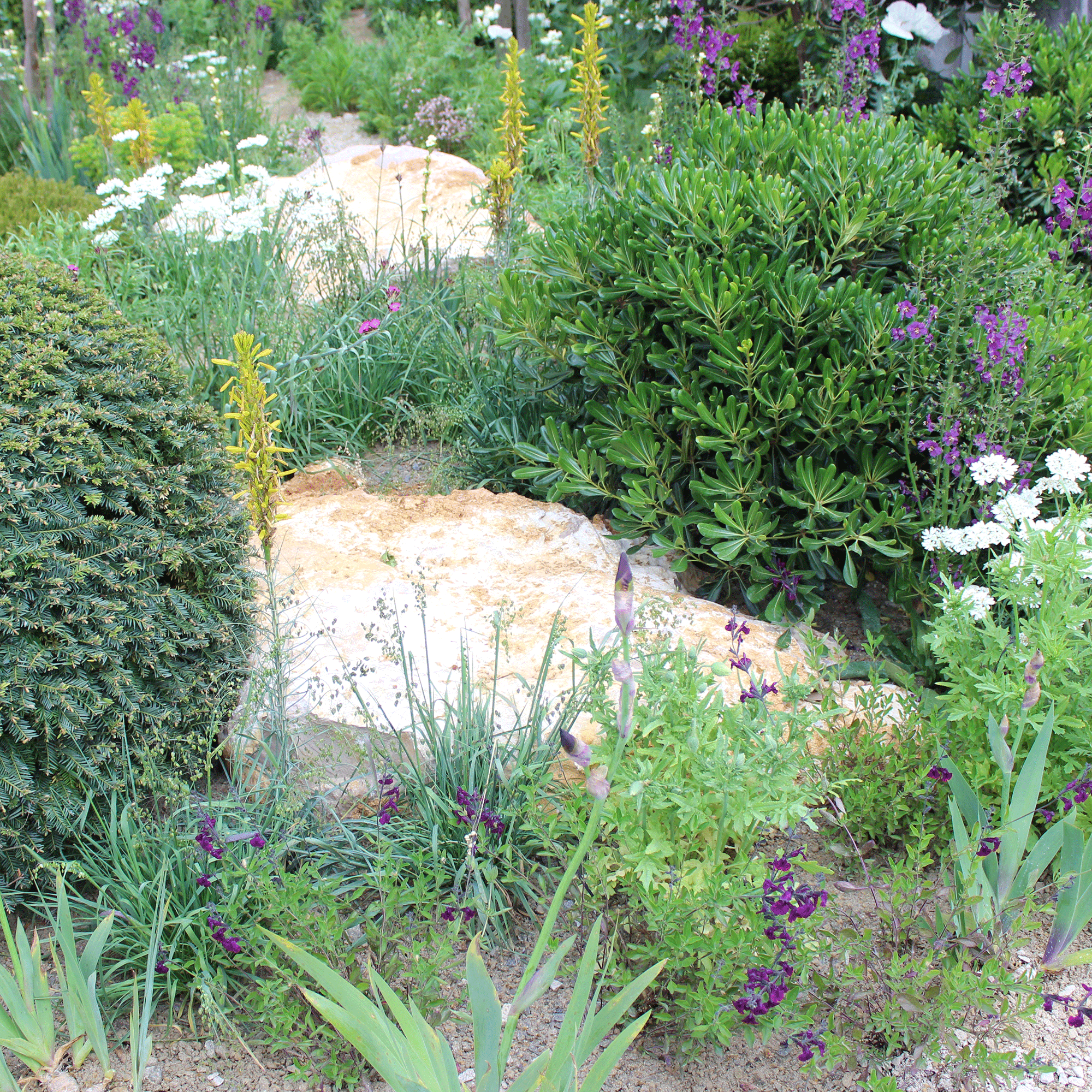
Ideally, you need an open site that receives the sun for at least part of the day. When choosing your rock garden site, make sure it’s not affected by overhanging tree branches. Interesting rock gardens can be created in boggy areas, but most aim to emulate alpine plant conditions, which are usually high up in mountainous ranges.
'These conditions go from red-hot daytime temperatures to sub-zero night-time temperatures,' says Lee.
2. Match the stone colour to surrounding stonework

You need to choose rock which reflects the surrounding area and connects your garden to your house. 'Go to a reputable garden centre or stone seller which works which ethical suppliers to choose your rock,' says Lee. 'Pick the stone's colour and patina (the natural surface patterns from ageing) that match up with surrounding stonework and colours.'
In rural or semi-rural areas, for example, traditional rocks such as sandstone look good. If you live in an urban area, you might go for a contrast or pick up on a dominant nearby colour. White rocks such as limestone brighten up small back gardens by reflecting available light. If you’re looking for front garden ideas you might choose a grey granite. It creates a sophisticated contrast against red brick
3. Cover your rock garden with pasque flower
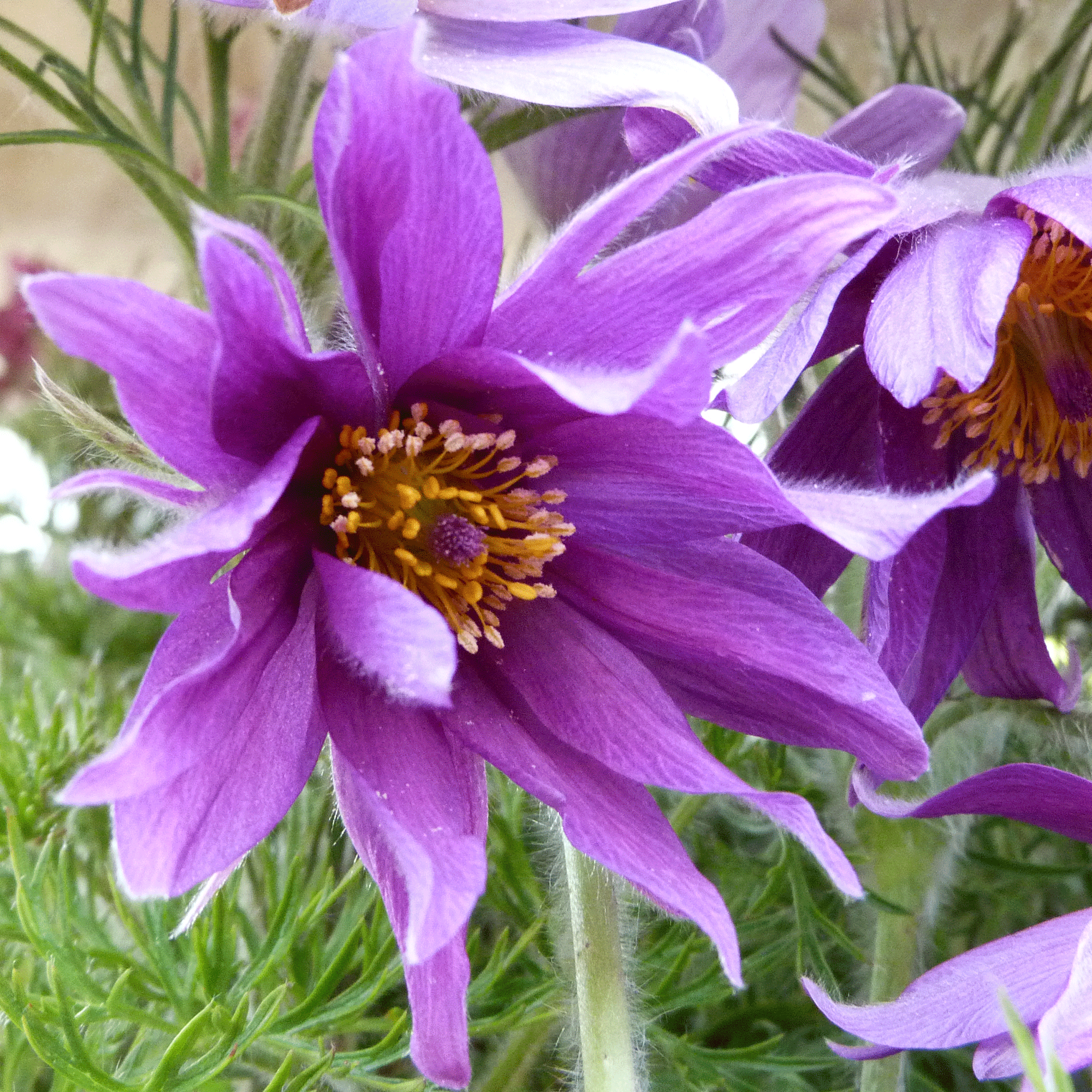
Rock gardens and sun-loving plants were made to go together. For full sun, Annelise Brilli, Thompson and Morgan’s horticultural expert likes Pulsatilla vulgaris (Pasque Flower). 'It’s a plant to coo over,' she says. 'When the sun catches its soft downy petals it’s a heavenly sight.'
Its favourite spot is baking hot, so place Pulsatilla vulguaris in a prime south or west-facing position with good drainage and you may even be rewarded with self-sown seedlings, adds Annelise.
If your rock garden receives only partial sun, Annelise recommends Dodecatheon media (shooting star) with its masses of dainty pink flowers resembling clusters of falling stars above mounds of broad foliage: 'It’s a jewel of a plant. It likes to keep its feet moist throughout summer but requires good drainage through winter, so it's perfect for partially-shaded areas.'
4. Be inspired by wooded mountain slopes

At the Royal Botanic Gardens in Kew, southwest London, where the 6,000 plant-strong Rock Garden was built in 1882, shady areas take inspiration from wooded mountain slopes in Asia, explains gardens supervisor Faye Adams.
'We change the atmosphere completely from the more open areas,' she says. 'Shrubs such as Euonymus alatus ‘Compactus’ (burning bush) will give fiery autumn colour and winter bark interest. This can be planted alongside species such as Primula denticulate (drumstick primula), Hosta venusta (plantain lily) and Roscoea cautleyoides (orchid-like with origins in China), which has pale lemon flowers that can last for weeks in dappled shade.'
Annelise also likes Saxifraga ‘Dancing Pixies’, because it will even thrive in full shade and comes into its own in autumn. 'Most rock gardens are a riot of colour in the spring but devoid of interest for the remainder of the year,” she says. “Unusually, this plant flowers throughout the autumn, producing masses of starry flowers in white, pink and red.'
And this Saxifraga actually hates hot temperatures, Annelise adds. 'Protection from the midday sun is essential as this can scorch the leaves and cause permanent damage. A cool shady crevice in a north-facing position is perfect.'
5. Add wow-factor with tall-growing plants
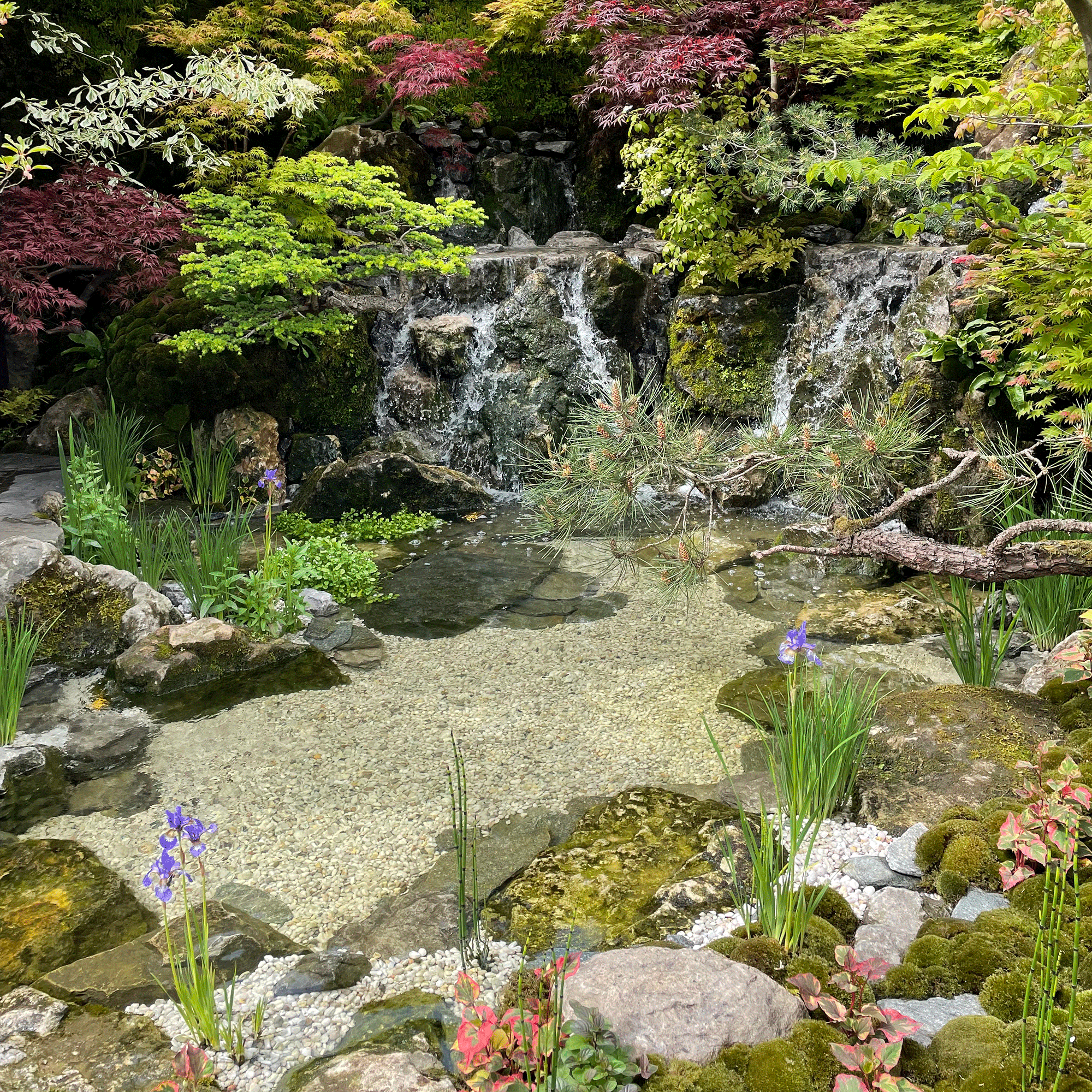
Once you have your stones in place, a rock garden can still feel as if it’s lacking that dramatic ‘wow factor’, as many popular rock garden plants are low-growing. Take a tip from Faye. In the Rock Garden at Kew, tall-growing plants found in the Mediterranean, the Caucasus area between the Black Sea and the Caspian Sea, and South Africa provide height-adding planting inspiration for sunny, exposed areas.
She recommends Asphodeline lutea (king’s spear), Eremurus spectabilis (Foxtail lily) and Dierama igneum (fiery wandflower), as these are 'great examples with flowering spikes that tower above long strap-like leaves'.
6. Opt for low-maintenance plants
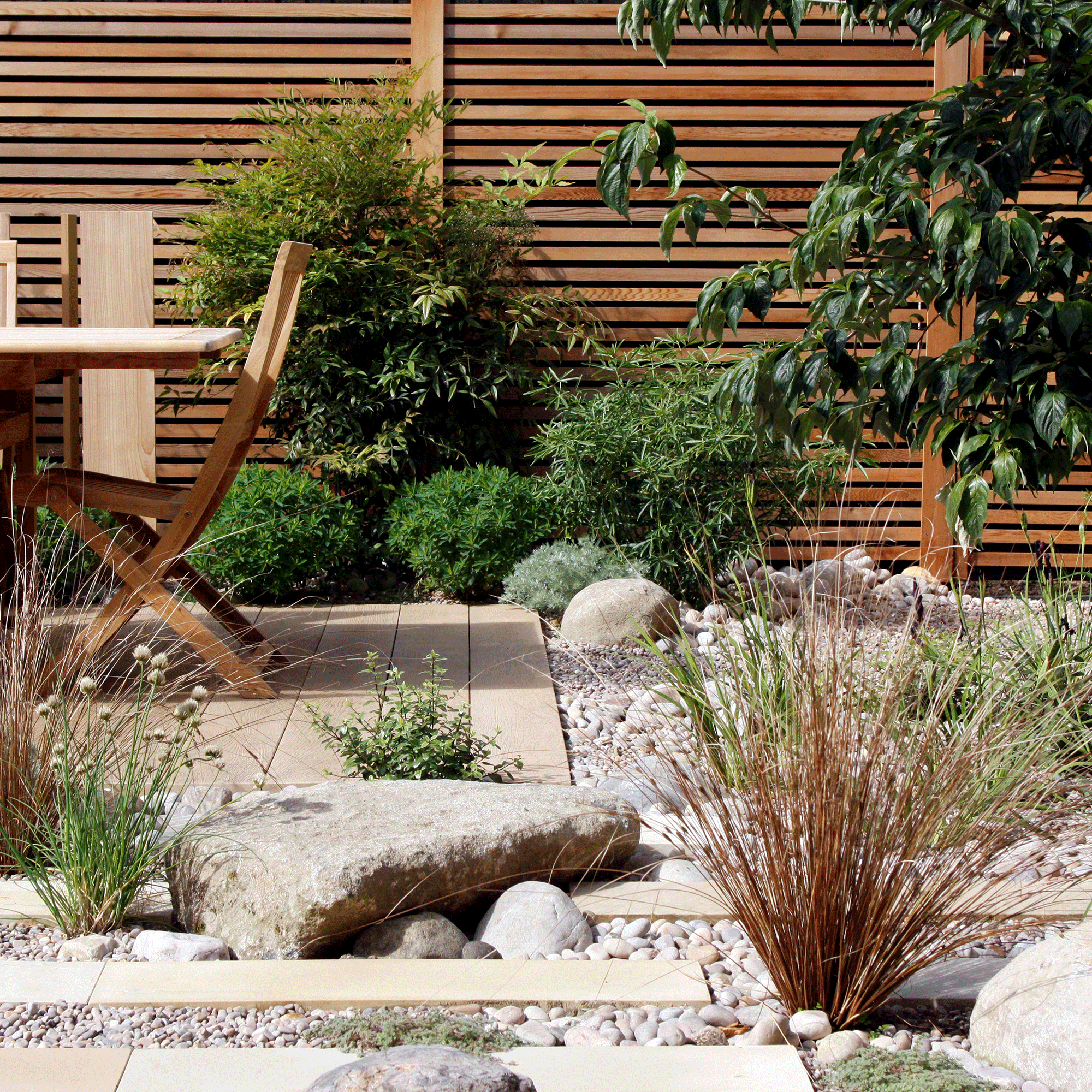
The cheerful white flowers of Cerastium tomentosum (Snow in Summer) are often seen in rock gardens, but Annelise would avoid including this favourite because it can be invasive and demand too much care and attention.
'I once visited a client’s garden which had been entirely swamped by this plant,' she says. 'Even the pond had disappeared beneath it! It's very pretty with silvery foliage and masses of white flowers in late spring and early summer, but you'll need to be vigilant as it spreads rapidly by both runners and seed. There are also hundreds of flowers to dead-head.'
7. Keep most plants compact for variety

Keeping invasive plants under control is one of the biggest rock garden challenges. Most alpine rock plants should be trimmed after flowering. This will keep them neat and compact and prevent them from getting out of control and smothering their neighbours.
'One really important thing is to avoid applying fertiliser to rock gardens,' says Annelise. 'Rock plants generally thrive in nutrient-poor soil. The addition of fertiliser will simply encourage masses of soft leafy growth and fewer flowers.'
Faye says it’s important to get to know your rock garden, identifying competitive plants, such as those that spread in mats and the self-seeders: 'If you don’t want them to spread, cut them back before the seeds start to appear.'
8. Source rocks from salvage yards
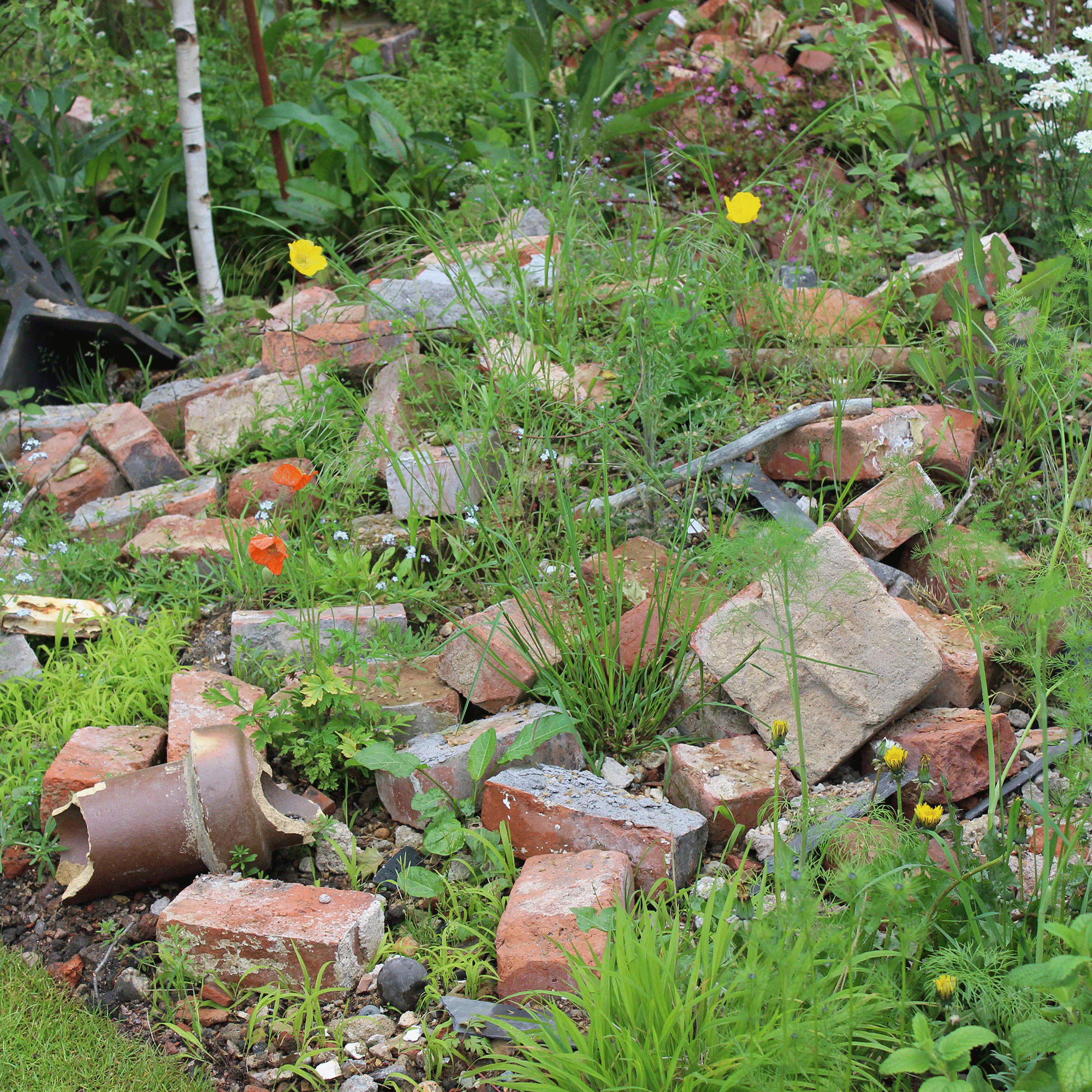
Save money on rocks and aggregates such as gravel by looking online – try Facebook Marketplace – for second-hand materials left-over from larger jobs. You might even get these for free if you’re able to collect. Using garden discount codes will also help you find garden materials online for less.
Also look at local salvage yards and quarries. If you have one close, you’ll certainly end up with rock that matches the landscape.
With planting, one cheap and quick tip, if you’re looking for budget garden ideas and have a large rock garden to cover, is to combine it with wildflower garden ideas and scatter a wildflower seed mix. This will lead to a natural carpet of colours at very little cost, although you may find you end up weeding out the flowers you don’t want to focus on the ones you do.
Lee says that rather than spend money on amassing a variety of specimen plants, focus funds on repeating the same – saving money on bulk buys in the process: 'Repeat colours or textures, plants in multiples of three, five or seven, and go big in smaller rock gardens to make a strong statement.'
9. Keep seasonal interest
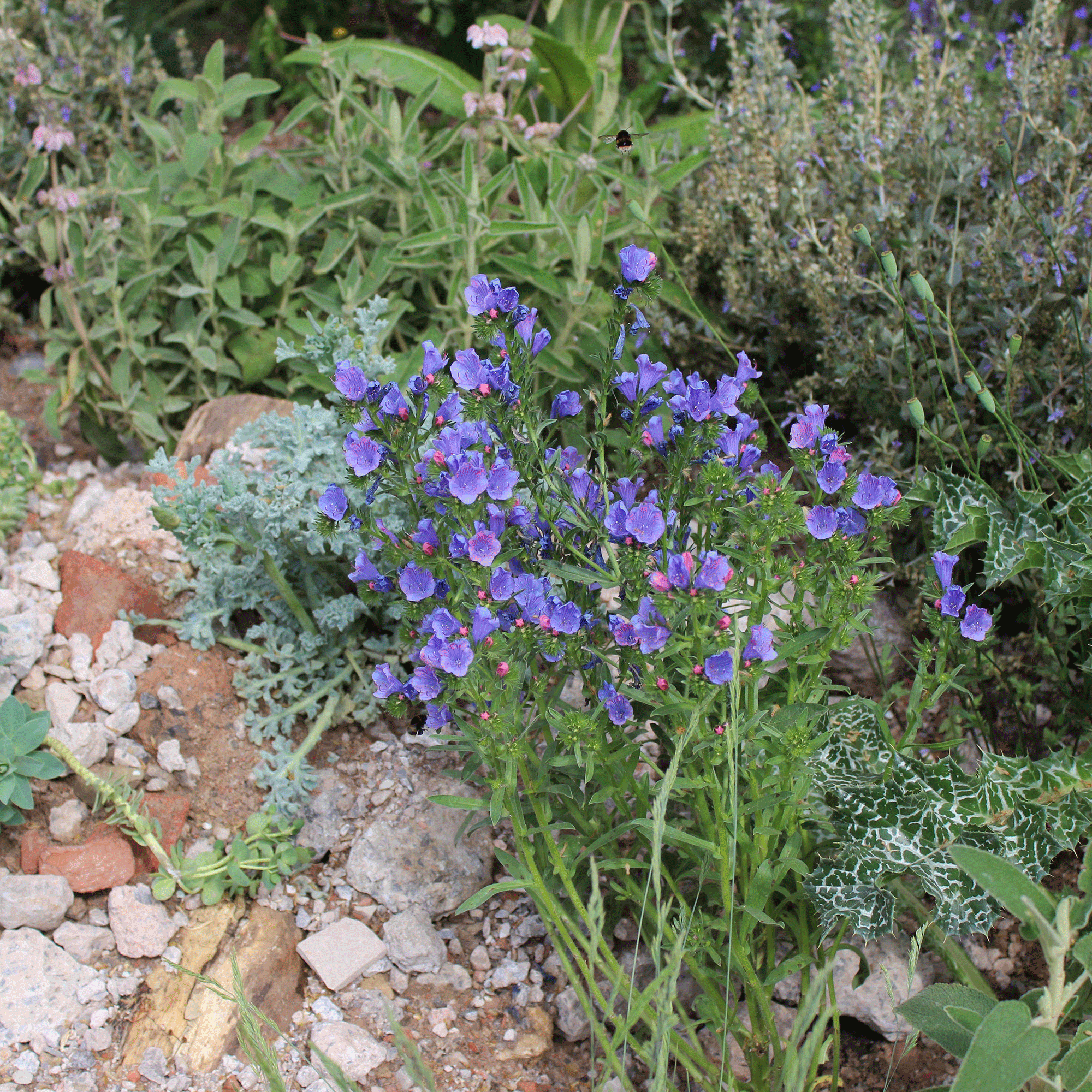
Bulbs are a key part of seasonal interest whenever you’re planning a garden and rock gardens are no exception, says Fay. 'Bulbs are the key to keeping it looking interesting year-round. You can’t beat great swathes of Colchicum (autumn crocus) or Cyclamen in Autumn. Then there’s the showy flowers and lush foliage of Iris x germanica, flowering in that sometimes awkward period between May and June.'
Also, encourage evergreen ground cover such as moss to form, so that there is always something green to look at. If you have space, you might also add a water feature; a waterfall can be very impressive incorporated into a sloping rock garden, or a spherical or cylindrical object nestling in the rocks will create a striking contemporary look.
10. Be bold with larger stones

Not being brave enough with the size of stones is one of the biggest and most common mistakes you can make when planning a rock garden, according to garden designer James Scott, founder of The Garden Company.
'Be bold and use some larger stones for impact,' he says. 'Relying solely on small stones tends to create a ‘currant bun’ effect. Place the larger stones first and then position the remaining stones around them, so you get a pleasant integrated look.'
Another one of James’s rock garden pet hates is symmetry: 'It’s better to create little compositions or clusters of several rocks rather than evenly spacing the rocks out in measured ways. Symmetry will not look natural.'
How do you build a rock garden?
The first step is to sketch out your ideas, and also establish how much space you have available and what kind of plants would be suitable.
Even if your drawing skills are minimal, look at other rock gardens for inspiration and work out how you would like the rise and fall of the rocks to appear. 'The main aim is to help the rockery blend in with its surroundings,' says Lee. 'I would argue that this is the trickiest part. It's easy just to stack up the rocks in one corner and then plant a few random succulents or alpines in there.'
When you’ve decided on the shape and size, flatten out the area – or the surface of the container, if you’re building a tiny rock garden. Remember, it can slope – some garden designers prefer to design sloping rock gardens because they are good for drainage – but the planting surface itself must be flat and obstruction free.
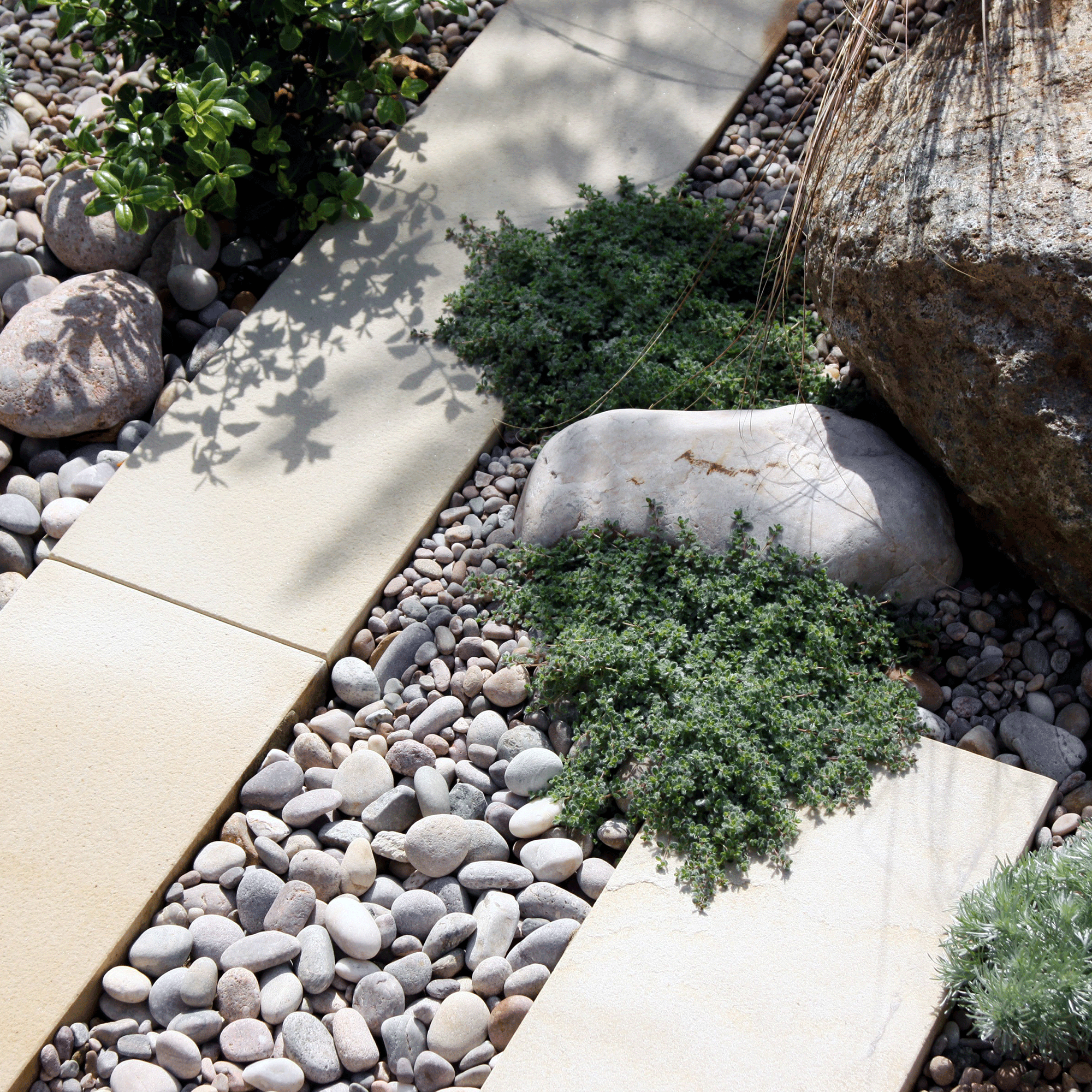
Next, select large stones to be the ‘keystones’ of your scheme. Position these into place first, bringing in other stones to create a natural scene. 'It’s important to place the stones so that the strata [the natural markings] run the same way, this creates a pleasing, natural flow,' says James. 'Otherwise, the visual effect can become very jumbled and make the rockery look like a pile of separate stones rather than a harmonised, cohesive feature.'
You might need to bring in rubble or crushed brick to create the levels you want; varying heights makes for a more interesting rock garden.
When you’re happy with the position of the stones, using a spade, dig a hole large enough to sink each stone to about a third of its height. Push back the stones slightly as you fit them into the holes; this looks more natural.
'As you place the stones, keep pausing and standing back to assess the overall effect,' says James. 'Check for balance and harmony.'
Weeds are the enemy of rock gardens; if they take root they will make the whole thing look messy and over-run. Always make sure every last weed seedling has been removed.
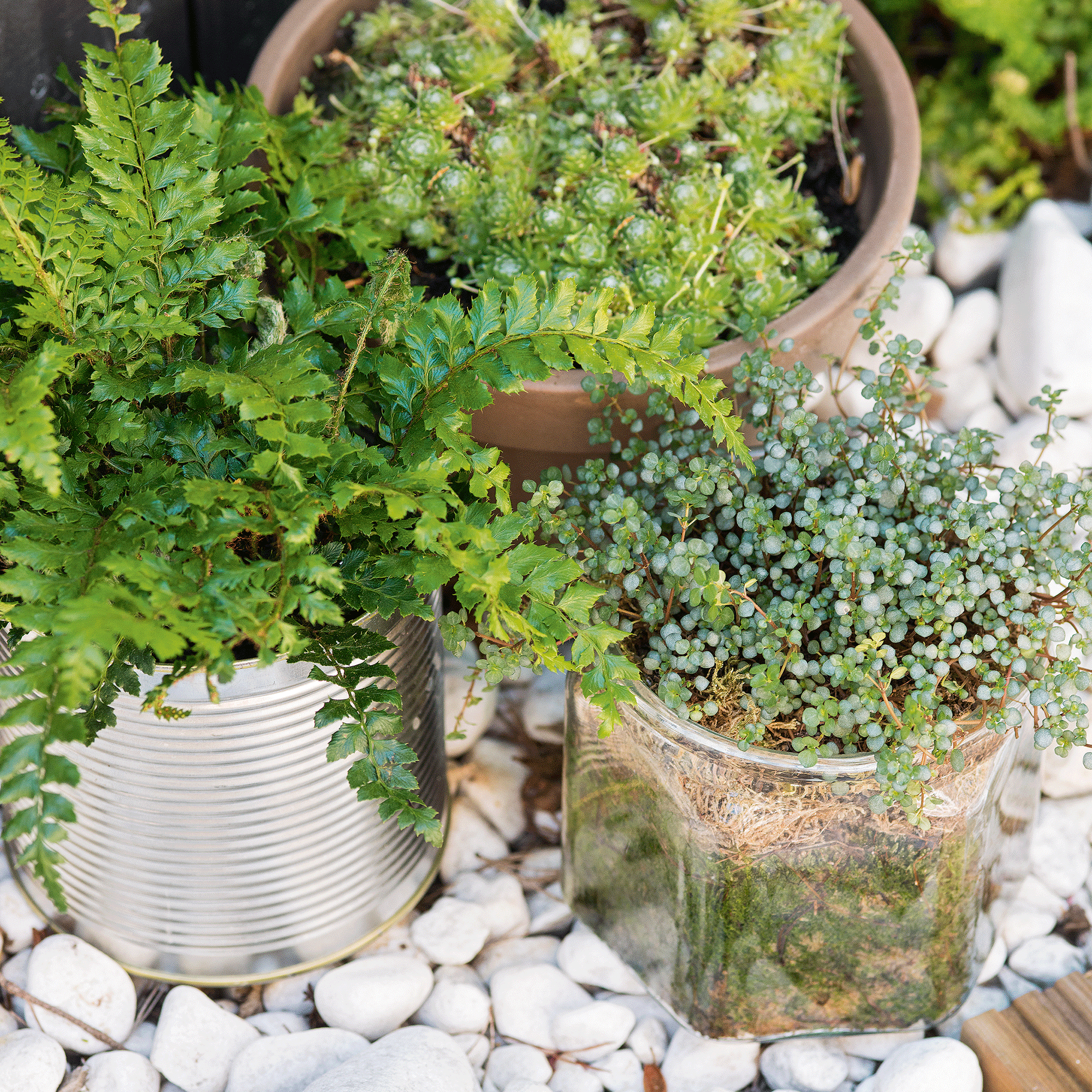
It’s a really good idea to lay a weed-suppressing membrane on the soil surface, see below, before you add a good layer of topsoil or compost, digging in grit to help with drainage. If your soil is clay, you will probably want to use a good-quality compost, because it will be too heavy for rock garden plants that thrive in poor, thin soil. If you’re growing a specific type of rock garden plant, adjust the soil accordingly; succulents and cacti, for instance, like sandy conditions.
Lay out your plants first before you start planting them firmly into pockets of soil or compost, to ensure you’re happy with their placement.
Then simply firm each plant into place. Finish the surface with a generous layer of grit or gravel. When you’re done, give everything a good watering with a gentle nozzle to avoid damaging the new plants.
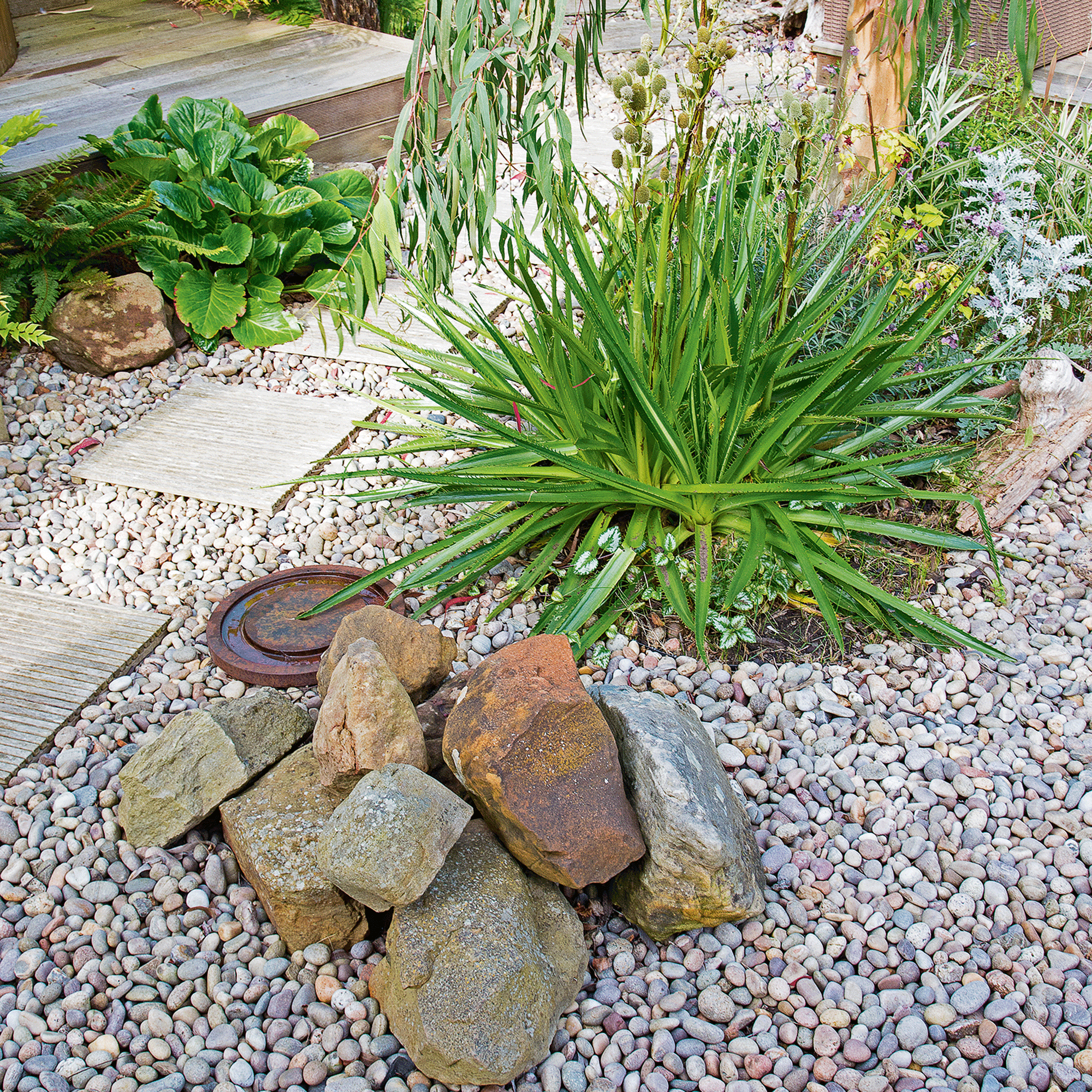
What do you put in a rock garden?
There is a huge variety of plants to choose from, as rock gardens can include anything from any rocky region of the world, says Faye: 'So not just alpines, but plants that grow in rock crevices, cliff edges, screes, and thin mountain soils. This provides the gardener with a wealth of plants from around the world to create a dramatic landscape.'
How can I deal with weeds in a rock garden?
A rock garden base needs to be stable and weed-repellent. If weeds get a foothold in what is usually quite a confined space they will quickly take over.
Lee recommends using a weed-supressing membrane, laying this down first, then cutting holes for plants.
However, he has a warning. 'Don't be tempted by plastic weed membrane, which takes hundreds of years to break down and leaves ribbons of plastic everywhere,' he says. 'It also looks unsightly and can smother the earth.'
Instead, he recommends a felt or natural fibre coir membrane. Or for the ultimate budget-wise solution, he would use 'ordinary cardboard. Yes, that's right. Lay this down, then cut planting holes through it. Cover with grit once the rockery plants are in.'
The eco-bonus is that the cardboard naturally breaks down over time, making this a very sustainable choice.
What is the best ground cover for a rock garden?
For ground cover, Annelise loves low-growing sedums that form dense mats of colourful, fleshy foliage. She recommends the ‘Sunsparkler’ Series, because it offers an array of vivid foliage colours, providing interest for many months. ‘Lime Zinger’ bears red-edged leaves, ‘Wildfire’ has brilliant ruby-red foliage whilst ‘Plum Dazzled’ comes in deep maroon. boosted by summer flowers that are a magnet for pollinators,' she says.

Jayne Dowle is an award-winning freelance gardening, homes and property writer who writes about everything from swimming ponds to skyscraper apartments, for publications including Sunday Times Home, Times Bricks & Mortar, Grand Designs, House Beautiful and The Spectator. Awarded the Garden Journalist of the Year accolade at the Property Press Awards in 2021, she has a degree in English Language and Literature from the University of Oxford and a lifelong love of homes, interiors and gardens.